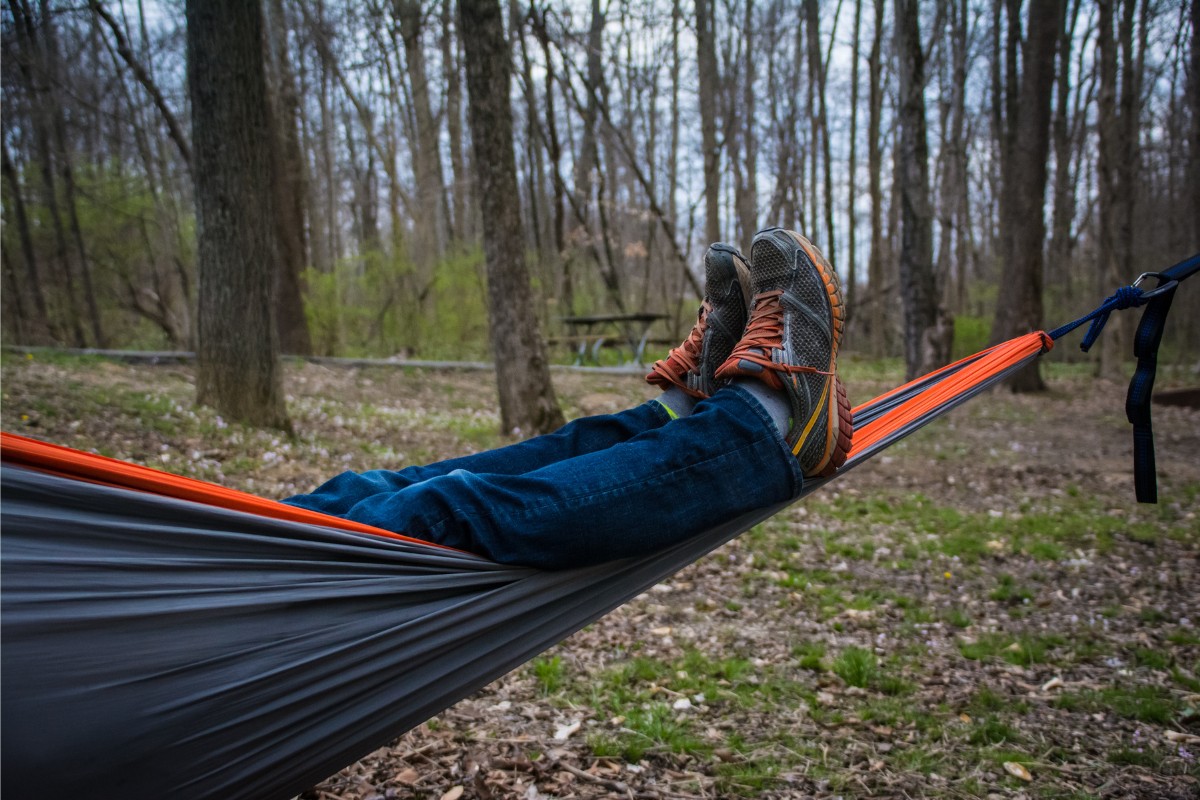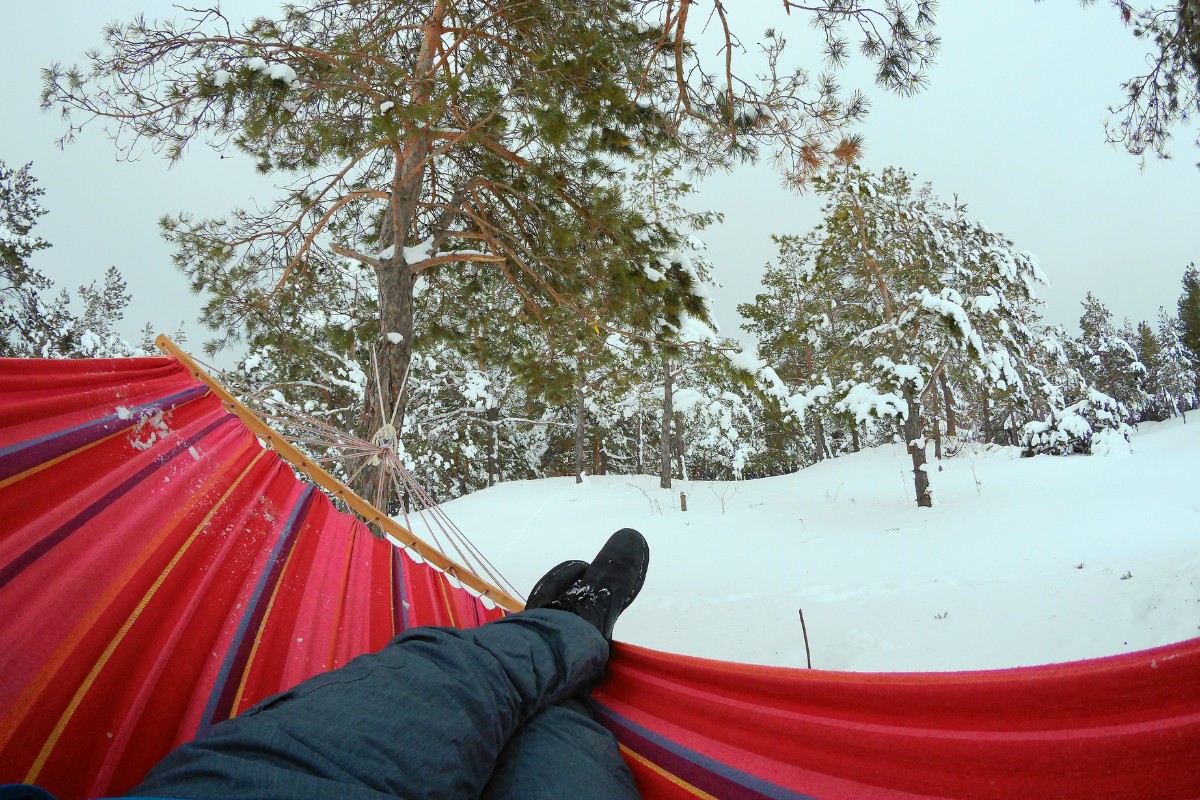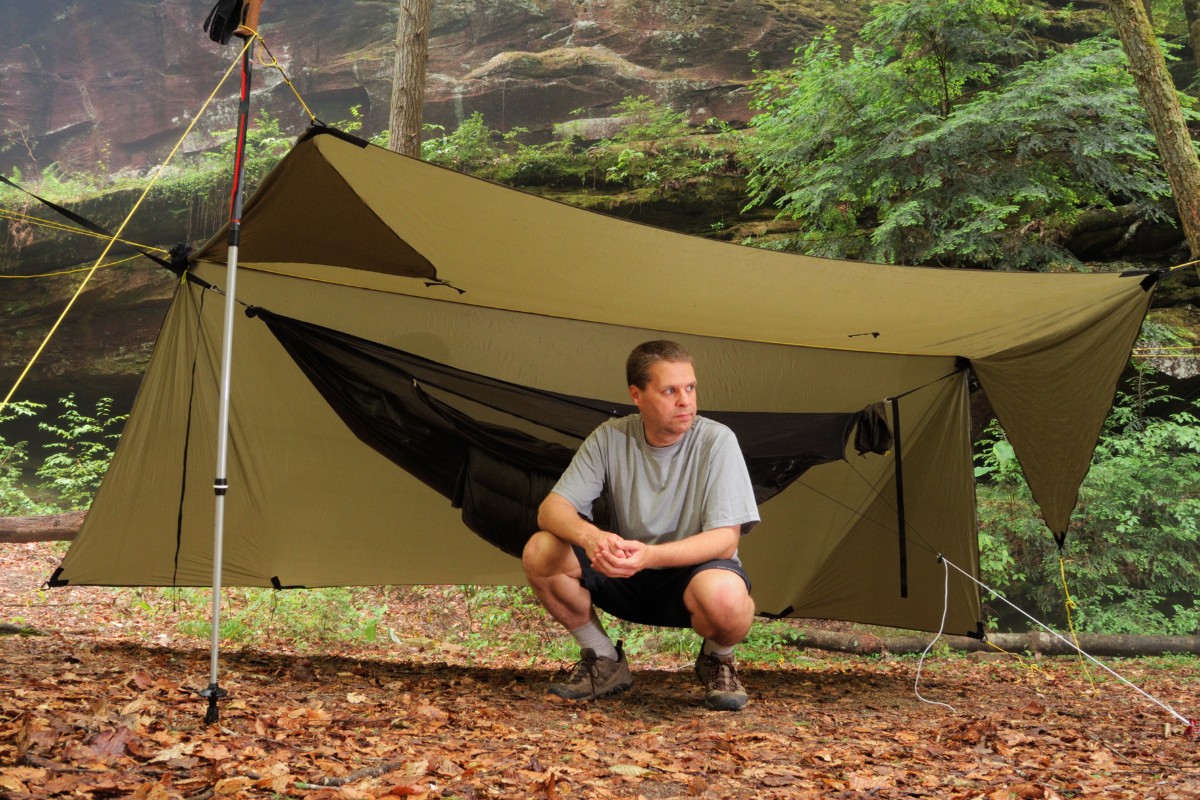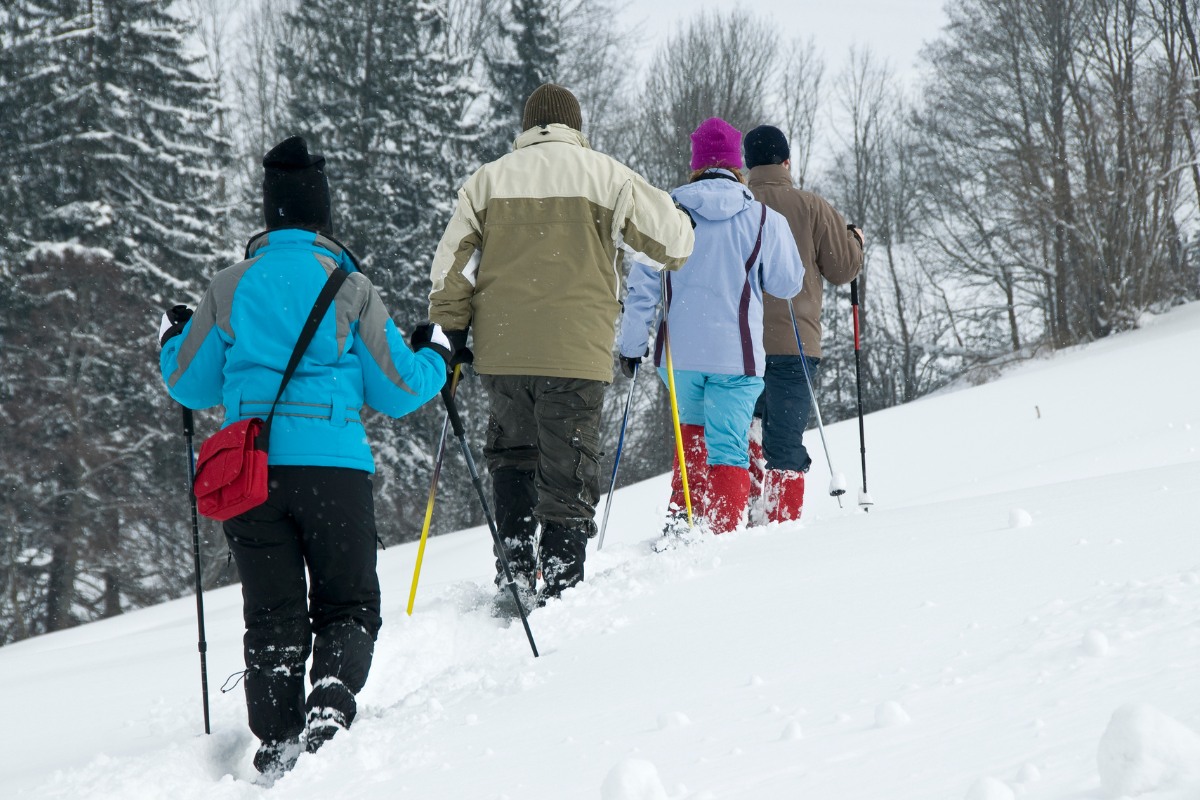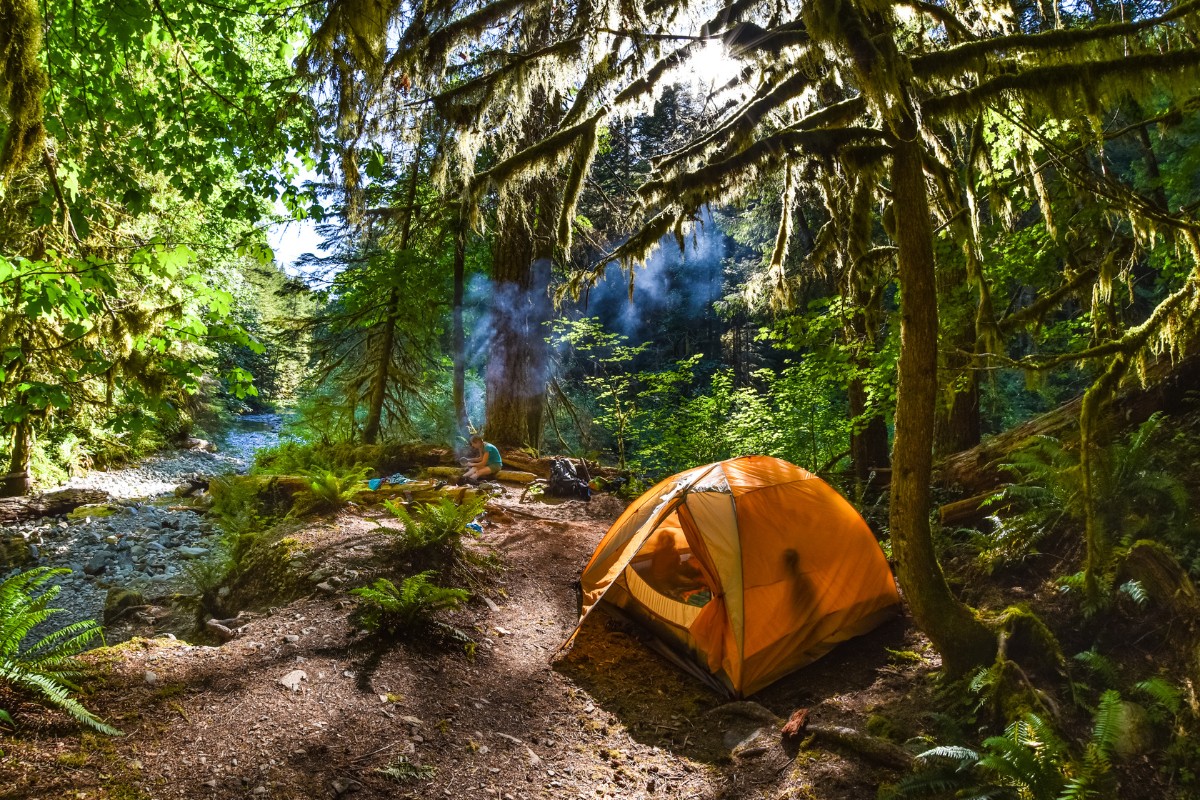When you think about camping, you probably conjure up images of tents and sleeping bags. In recent times however, hammock camping has received a surge of appeal among campers and backpackers alike for several good reasons, most notably because it’s the hot, new way of sleeping in the midst of Mother Nature.
Before answering the big question of how to stay warm when hammock camping, it is important to understand how this type of camping differs from traditional camping so that you can pack the right gear for your outdoor adventure.
Think Outside the Tent
Hammock camping just like the name would suggest is basically sleeping in a hammock rather than a tent. But the hammocks used for camping are not to be confused with backyard hammocks that typically feature woven nets and wooden spreader bars.
Camping hammocks are designed exclusively for sleeping in the Great Outdoors, and in most cases tip the scales at less than 3 lbs. They come with straps, a tarp or a rainfly and mosquito netting, and can easily be packed away to the size of a softball, making them a better option than most backpacking tents.
Tent camping is how most campers start off; hence, is deeply rooted in camping traditions. One of the biggest reasons people choose to camp in a tent is because they offer a level of security and the coziness of a miniature home. Adding to this, they offer protection from inclement weather, pesky insects and animals.
Hammock camping offers all the aforementioned benefits and much more, given that some of the best camping hammocks come with the same premium features as the best tents.
One downside of hammock camping, however, is that even though they offer a nice spot to relax and some even double up as camping chairs, they aren’t a great choice in harsh weather.
Furthermore, most if not all camping hammocks are designed to accommodate just one person, and offer limited room to do anything more than sleeping, reading or relaxing.
On a brighter note, hammock camping gear is easier to set up and pack away after use compared to traditional tents. If you’re car camping, you can enjoy the best of both worlds – pack a tent and hammock and decide later which sleeping option you’d prefer for the night.
Camping Hammock Buying Guide
In order to make your hammock camping experience more comfortable and enjoyable you need to buy the best camping hammock. But since no two hammocks are created equal, here are a few factors to consider when shopping for the best hammock for camping.
Weight Capacity
This is generally represented in lbs., and the higher the number, the more weight it will accommodate. To give you a rough idea, most of the best camping hammocks are good for more than 200 lbs., so you can sleep in them with your six pack and bag of chips.
Weight
This is the weight of the actual hammock, and again represented in lbs., but in this case, the smaller the number, the easier it will be to haul it around. Although most camping hammocks weigh no more than a few lbs., it is important to consider if you’re going to be parking in a public park or campground and then hiking inland.
Fabric
Camping hammocks can be made from a wide range of material, mostly parachute material so they are highly unlike to cause any chafing. There are several reasons you’ll want to pay attention to the material they are made from including comfort, value, durability and to prevent equipment failure.
Netting
Mosquitoes and other insects can cause a lot of grief when camping and be potentially dangerous for your overall health. This is why it is important to choose a camping hammock that comes with some type of netting.
5 Tips to Stay Warm Hammock Camping
If you’re going to be winter hammocking, you will need to know how to brave the elements of cold weather.
Choosing the Right Spot
Wind is one of the biggest factors that can affect your winter hammocking experience, so it is wise to choose a spot to hang your hammock that blocks the wind, such as behind a boulder or in the middle of a dense forest.
Carry a Blanket and Sleeping Bag
Sometimes blankets aren’t going to cut it when hammock camping in chilly temperatures especially below 40°. Carrying a warm mummy-style sleeping bag, preferably one that’s rated to 15° F or less with a down or synthetic fill will keep you warm when you relax or sleep in your camping hammock.
Pillow Protector
Even though you will probably be sleeping with a hood on your head, bringing along a small pillow serves as an extra layer of protection between your head and the hammock camping material.
Trapping the Heat Around You
Since most camping hammocks don’t come with rain flys, you can either buy an all-purpose rain fly separately or use a standard tarp to trap in the heat, and stave off the wind/snow.
Sleeping Pad
If you’re camping hammock didn’t come with plush interior padding, you may want to bring along a sleeping pad to keep your backside warm by lying on top of it inside your camping hammock.
If you don’t have access to a sleeping pad, you can use your car’s window shade if it has reflective properties in your camping hammock for insulation. And if that’s not available or you don’t want to use the shade due to its crinkly noise, any closed-cell foam pad should suffice.
Conclusion
When looking for ways on how to stay warm hammock camping, you will be spoilt for choice given the plethora of options available. Apart from the 5 solutions to stay warm when winter hammock camping, you can also use a hammock-specific under-quilt if you don’t want to tie blankets to your hammock; use a top quilt that makes hammock entry and exit easy; or boil some water, pour it into a bottle and place the hot bottle at the foot of your camping hammock.
